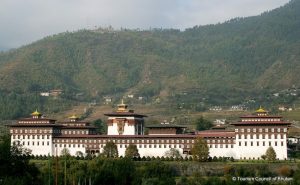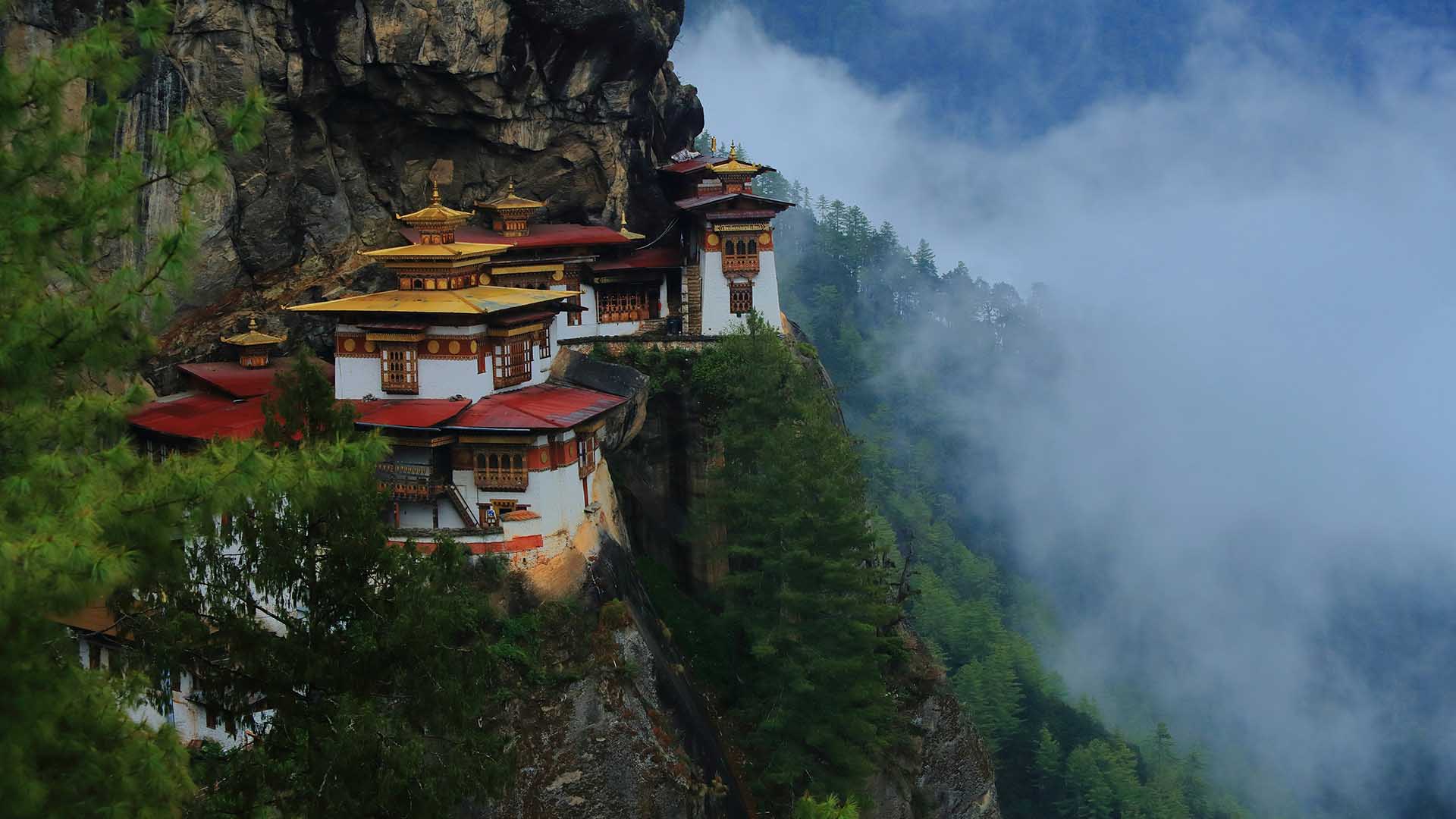01 Aug Tashichho Dzong
Tashichho Dzong, located on the northern edge of Thimphu, Bhutan, is a prominent Buddhist monastery and fortress situated on the western bank of the Wang Chu River. Traditionally, it has served as the seat of the Druk Desi (or “Deb Raja”), the head of Bhutan’s civil government, an office that has since merged with the monarchy since its establishment in 1907. Known in older British documents as Tassisudon, it also functioned as the summer capital of Bhutan.

Legend and Architecture
According to a 1922 traveler, the dzong was initially built by the first Dharma Raja, who founded the Lho-drukpa sect of Buddhism, which remains Bhutan’s distinctive sect. The dzong’s vernacular name, “Bkrashis-chhos-rdzong,” translates to “the fortress of auspicious doctrine.” Its main structure is whitewashed with two stories, three-storied towers at each corner, and triple-tiered golden roofs, including a large central tower known as the utse.
History
The original Thimphu dzong, known as the Do-Ngön Dzong (or Blue Stone Dzong), was constructed in 1216 by Lama Gyalwa Lhanapa, founder of the Lhapa branch of the Drikung Kagyu. Shabdrung Ngawang Namgyal later took over the dzong in 1641, renamed it Tashichho Dzong, and made it the primary seat of the Southern Drukpa Kagyu. The dzong was largely destroyed by fire in 1772 and rebuilt by the sixteenth Desi, Sonam Lhudrup, and consecrated by the thirteenth Je Khenpo, Je Yonten Taye. Following the Desi’s death, it was renamed Tashichho Dzong.
The dzong suffered further damage from fires and earthquakes but was rebuilt by successive Desis and Je Khenpos. In 1962, after the capital moved from Punakha to Thimphu, the dzong was reconstructed by the third king, Jigme Dorji Wangchuck, as the seat of government. Only the central Utse tower, the Lhakhang Sarp (new temple), and the main Gönkhang (protector temple) remain from earlier structures. The rebuilt dzong was consecrated in 1968 by the 66th Je Khenpo Yonten Tarchin, the 16th Karmapa Rangjung Rigpai Dorje, and Je Kudre Jamyang Yeshe.
Current Use
Since 1968, Tashichho Dzong has been the seat of Bhutan’s government, housing the king’s throne room, the cabinet secretariat, and the ministries of home affairs and finance. Some government departments are located in adjacent buildings, while the royal family resides at Dechencholing Palace.
The dzong contains thirty temples, chapels, and shrines, and includes a small tower, Ney Khang Lhakhang, west of the dzong that houses a statue of Shakyamuni Buddha and protective deities. Renovations have occurred over time, including a significant renovation in 1777 by the 18th Desi Jigme Singye, and further additions such as the Ditsang lhakhang in 1826 by the 32nd Desi Phurgyal. In 2002, a newly built Neten Chudrug Thongdrol (16 arhats) was added by the Je Khenpo.
Significance
Tashichho Dzong remains a vital cultural and administrative center in Bhutan, reflecting the country’s rich religious heritage and political history.


Sorry, the comment form is closed at this time.